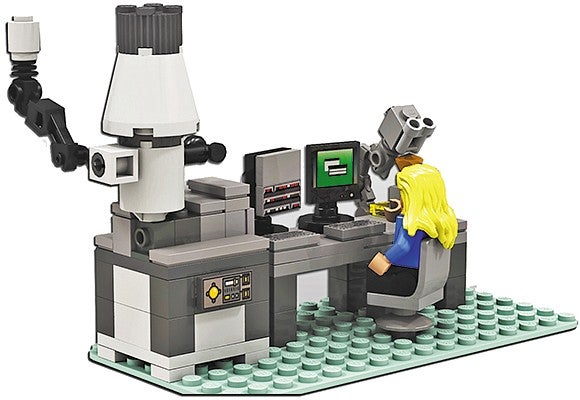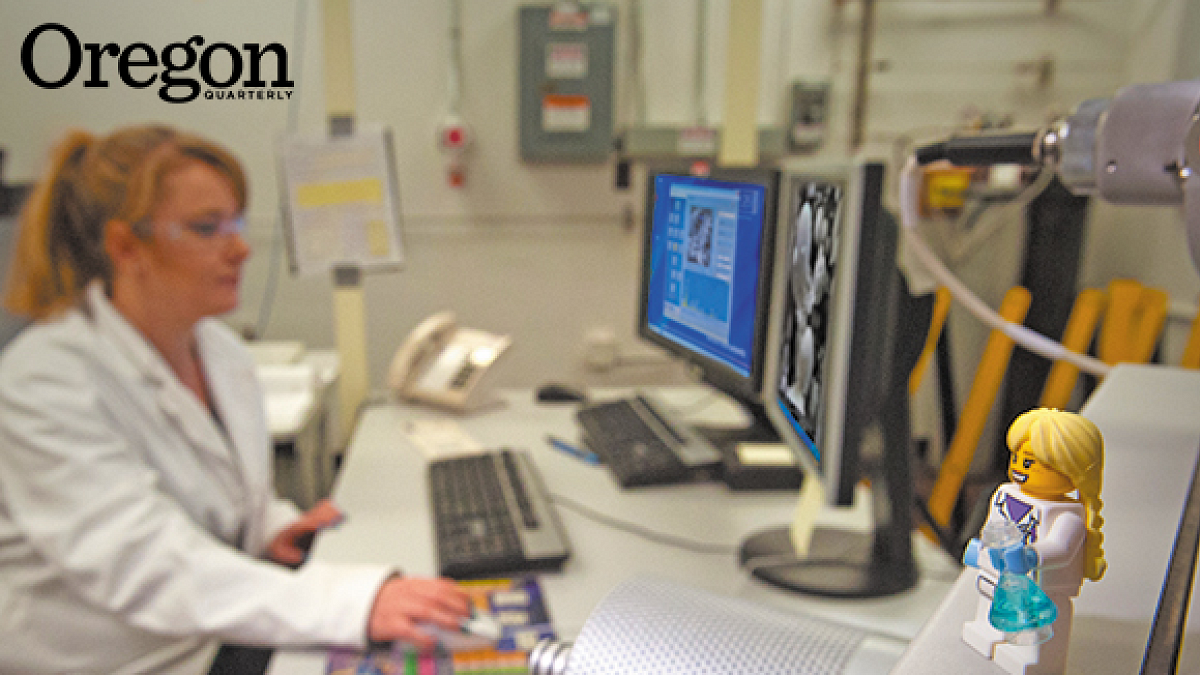Circe Verba, PhD ’13, is passionate—really passionate—about science. Her voice becomes animated and her excitement is contagious as she talks about her work as a research geologist at the National Energy Technology Laboratory (NETL) in Albany, Oregon, where she studies the interactions between engineered media—materials like cement—and natural geological systems. That enthusiasm continues as the topic turns to encouraging and supporting kids, especially girls, who are interested in science. And don’t even get her started on Legos. But more on that in a moment.
Verba currently works on four major research projects at the NETL, one of 17 United States Department of Energy labs across the country. The projects concern safety and efficiency related to fossil energy sources, such as examining methods of extracting rare earth elements (used in the production of cell phones, among many other things) from coal byproducts, and the geochemical processes that occur when cement—a surprisingly complex engineered medium—is used in wellbores, the holes drilled to extract resources, such as natural gas or oil, from a mile or more underground.
This research represents a logical progression from her doctoral work at the UO, where she studied under professor of geological sciences Mark Reed. She earned her PhD in just three years while holding a full-time internship at NETL, which supported her education through Career Pathways, a National Nuclear Security Administration program designed to help women and minorities pursue higher education and careers in science. Previously, she spent two years as an image analyst at NASA, working with HiRISE (High-Resolution Imaging Science Experiment), a large-aperture camera that is on board the Mars Reconnaissance Orbiter. “I went from looking at something from a large scale, where it’s on another planet, to a microscale, using a scanning electron microscope to look at the structure you can’t see with the naked eye,” she says.
Whether the scale is macro or micro, an intense curiosity is the common thread throughout Verba’s work—and life. “I have a fascination with learning how something works,” she says. “It’s that fascination that has always pushed me.” She decided she wanted to be a scientist—an astrophysicist, specifically—at 14, inspired by a teacher “who was just so excited and passionate about the planets,” she says. “It was exciting to know there was something much bigger than us here on Earth, and to wonder what more there is out there that we don’t know.”

Verba grew up in Pendleton, Oregon, a town of about 17,000 that is best known for its annual rodeo and namesake woolen mill. There weren’t many opportunities there for kids to get involved in science, but in high school, she participated in Oregon State University’s Science and Math Investigative Learning Experiences program (SMILE), which provides precollege learning opportunities in science, technology, engineering, and mathematics fields. That paved the way for her to earn a BS in geology and earth science from OSU, studying a mixture of astronomy, geology, and atmospheric sciences. “That was my dream for a really long time.”
Verba was the first in her family to attend college, and encouraging kids to go into science, helping them understand the breadth of geology as a discipline, is a passion for her. “I really love going to the high schools,” says “Dr. Verba,” as she’s known to the kids around Albany. “I’m excited when I see somebody have a spark of interest in science.”
Which brings us back to Legos. “We didn’t have a lot growing up when I was a kid,” she says, “but my mom used to go to garage sales all the time, so I had this big, red bucket of Legos.” She’s still an enthusiast. A year or so ago, she took “a bunch of random Legos” and built a geological field site with rock layers, crystals, and a little blond Lego minifigure representing herself. Then she added the lab, including what is likely the world’s first Lego scanning electron microscope, a research partner, and a lab dog. At the urging of friends, she dubbed the set Research Geology in Action! and submitted it to Lego Ideas, a website where fans of the tiny plastic bricks propose projects for public voting. If an idea gets 10,000 votes, the company will consider manufacturing it.
Verba’s set, as featured on the site, “shows research geologists discovering minerals in a limestone rock formation and the characterization of the minerals in the laboratory.” She’s hoping it might help more kids envision themselves working in such a place. “We’ll see where it goes,” she says. “I want to find avenues to show little girls that they can do anything that they want to.”
—By Ann Wiens
Want to see—or support—Research Geology in Action! as interpreted in Legos? Visit https://ideas.lego.com/projects/93813.


